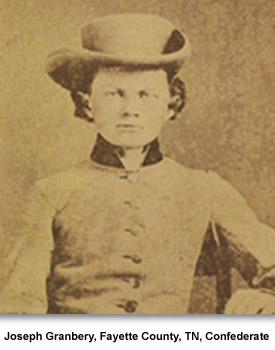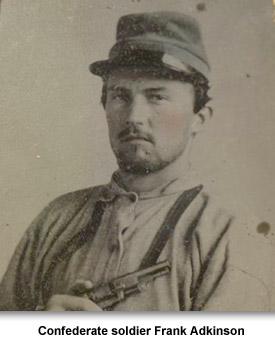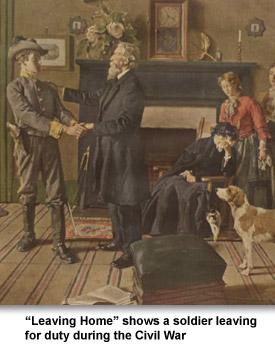Why Did Tennesseans Fight?
Have you ever wondered why soldiers in the Civil War would stand shoulder to shoulder with bullets flying and cannon balls bursting around them? Why did they fight? Why didn’t they run?
The answer to this question varies from army to army and even from person to person. Reading the actual explanations written by Tennessee soldiers helps us understand some of the reasons why they fought.
For life, liberty and property
Tennessee farmer Hannibal Paine joined the Confederate army. He explained his desire to fight: “…life, liberty, and property…are at stake” and therefore “any man in the South would rather die battling for civil and political liberty, than submit to…a northern tyrant.”
At this time for some Tennesseans, property included not only things like houses and land but also slaves. Paine clearly thought that the North and President Abraham Lincoln threatened the freedoms of southern whites.
For God and family
Joseph Dimmit Thompson was a Confederate soldier in the 38th Tennessee regiment. Shortly after the Battle of Shiloh he described his thoughts during the fighting.
He wrote to his wife that “I can not express my feelings on the battle field, but I firmly put my trust in God and felt confident that He would spare me. I continually raised my heart to him, in prayer, and in the thickest of the fight, I invoked His protection. At the same time, my thoughts were upon you and home.” Thompson’s religious faith and his family helped him through the battle.
For freedom
John McCline was a slave on the Clover Bottoms Plantation in Davidson County, Tennessee. When he was thirteen, McCline ran away and joined the Union army. After seeing the horror of his first battle, McCline thought carefully about why he wanted to be a Union soldier.
He concluded “that I owed something in the way of duty to the government that protected me. It clothed and fed me, and had freed me from the terrible lash, so mercilessly inflicted. Though a mere boy, I could do little in helping the great military system. Yes the little I could do would be some help, and I should do it as well as I knew how.”
For duty to country
Marcus Woodcock was from Macon County, Tennessee. He decided to join the Union army. He served in the 9th Kentucky Infantry. Woodcock wrote about why he decided to become a Union soldier. He explained “I have always…cherished an ardent feeling of love and admiration for my country.”
By joining the Union army Woodcock “felt that I was but doing justice to myself, to my country, to my forefathers, and to future generations.” He admitted “I did not possess an extraordinarily great amount of courage or desire to fight, but I did…desire to obtain with my own arms a right to distinction while I should be defending my Country’s rights.” Woodcock thought that it was his duty to fight for the Union. He did not claim to be braver than other people, but he wanted to do a good job fighting for the United States.
For fellow soldiers
Confederate soldier Robert Smith served in the 2nd Tennessee regiment. He recorded his experiences at the Battle of Shiloh in his diary. Smith wrote about how Colonel William Bate led them in attacking the enemy. Bate did not order the men to attack. Instead, he said “My brave boys, the enemy must be driven back. I am going to charge them again!! How many of you will follow me?”
Smith remembered “as quick as thought every man had his bayonet on the charge and started, double quick up the hill, giving…a yell…Onward we pushed th[r]ough that storm of bullets…until we regained our first position….we had the pleasure of seeing the enemy fall back.” Smith and the other soldiers were impressed by Bate’s bravery. They would not let him face the enemy alone.
Each of these Tennesseans had different reasons for becoming a Civil War soldier. However, they were all willing to fight and die for their beliefs.
Picture Credits:
- Joseph Granbery of Fayette County, Tennessee. A carte de visite, a type of photograph. He was a member of the Macon Greys, Company B, 13th Tennessee Infantry, C.S.A. Tennessee State Museum Collection, 2000.153
- Tintype, photograph, of Frank M. Adkinson, a Confederate soldier. Tennessee State Museum Collection, 3.153
- A print of the painting, “Leaving Home,” by Gilbert Gaul. Paintings about the Civil War were popular after the war and up to the early 1920s. Gaul did many such paintings although he did not serve in the war. Tennessee State Museum Collection, 2000.6.1
Civil War and Reconstruction >> Civil War >> A Divided State >> Why Did Tennesseans Fight?



 Sponsored by: National Endowment for the Humanities
Sponsored by: National Endowment for the Humanities